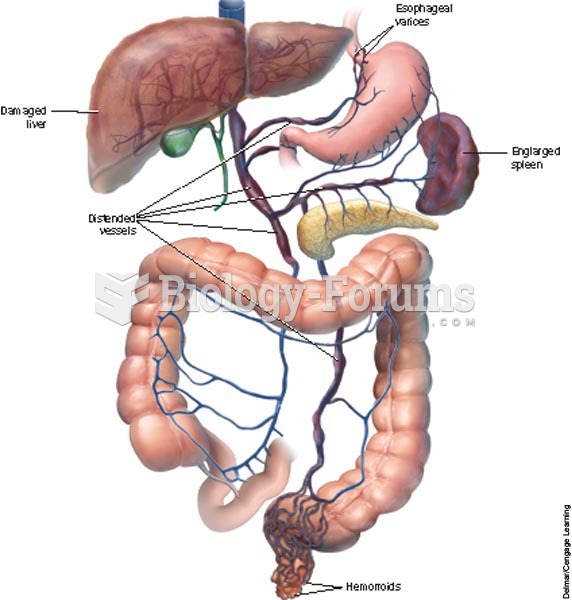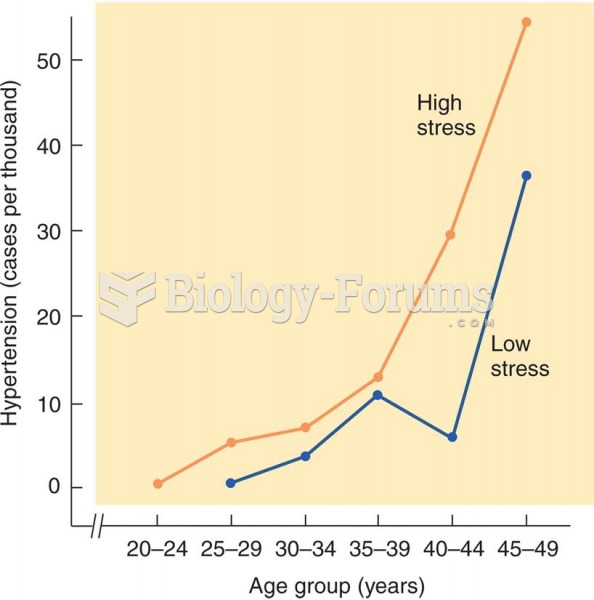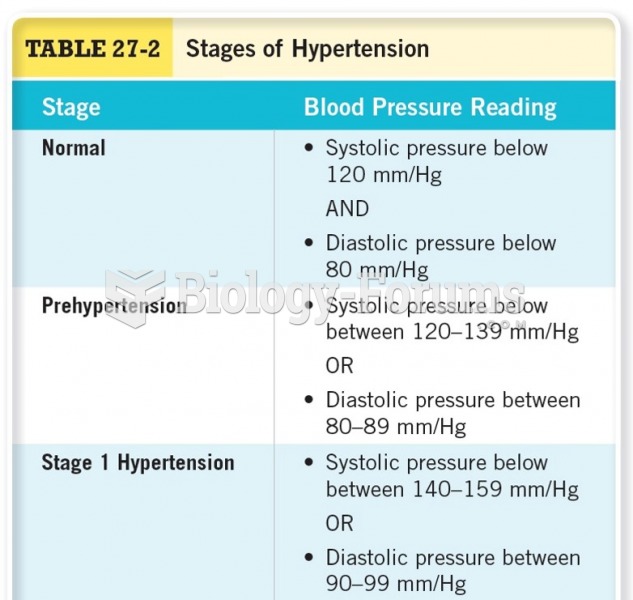|
|
|
The first documented use of surgical anesthesia in the United States was in Connecticut in 1844.
Bacteria have flourished on the earth for over three billion years. They were the first life forms on the planet.
It is difficult to obtain enough calcium without consuming milk or other dairy foods.
About 600,000 particles of skin are shed every hour by each human. If you live to age 70 years, you have shed 105 pounds of dead skin.
IgA antibodies protect body surfaces exposed to outside foreign substances. IgG antibodies are found in all body fluids. IgM antibodies are the first type of antibody made in response to an infection. IgE antibody levels are often high in people with allergies. IgD antibodies are found in tissues lining the abdomen and chest.







